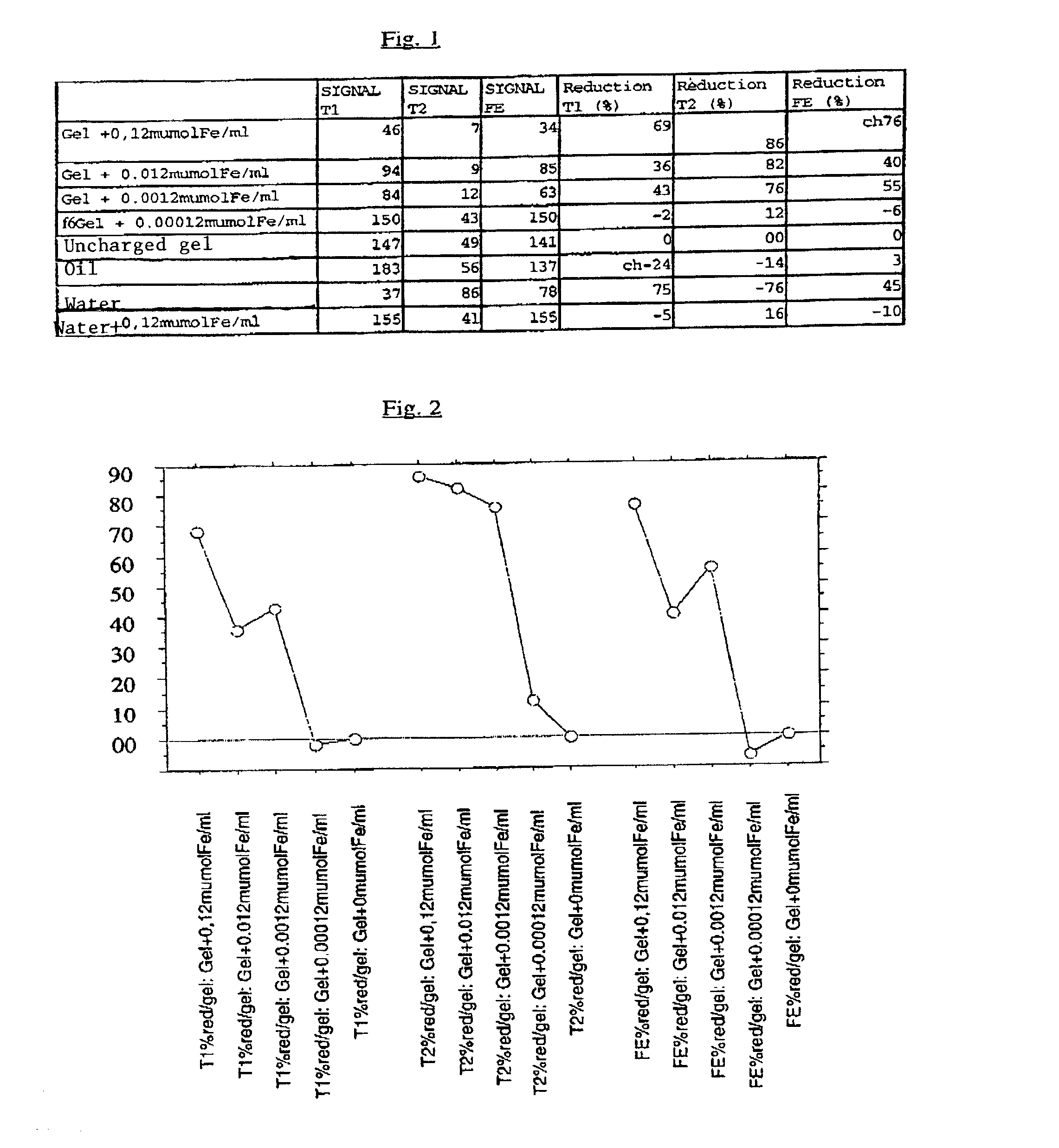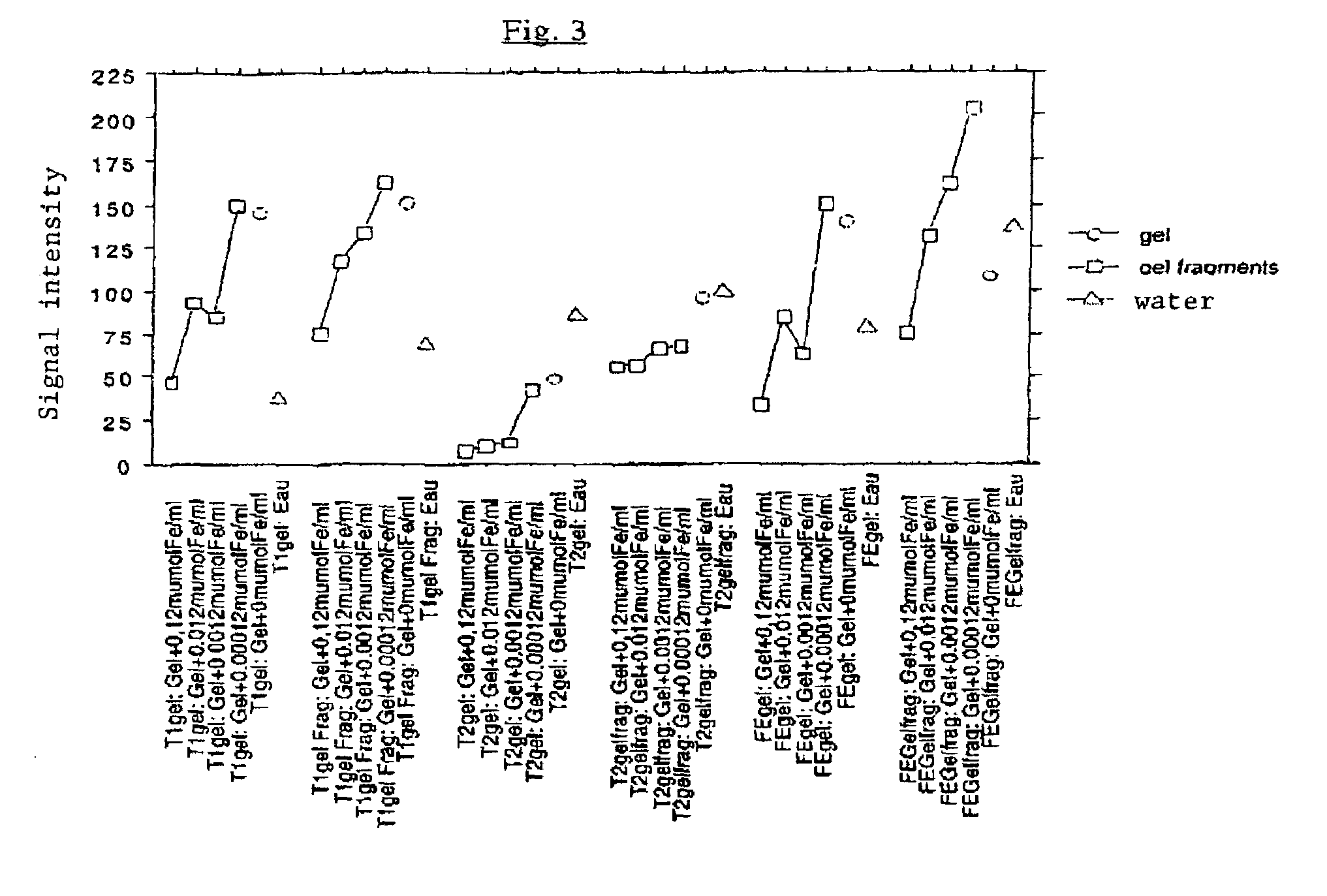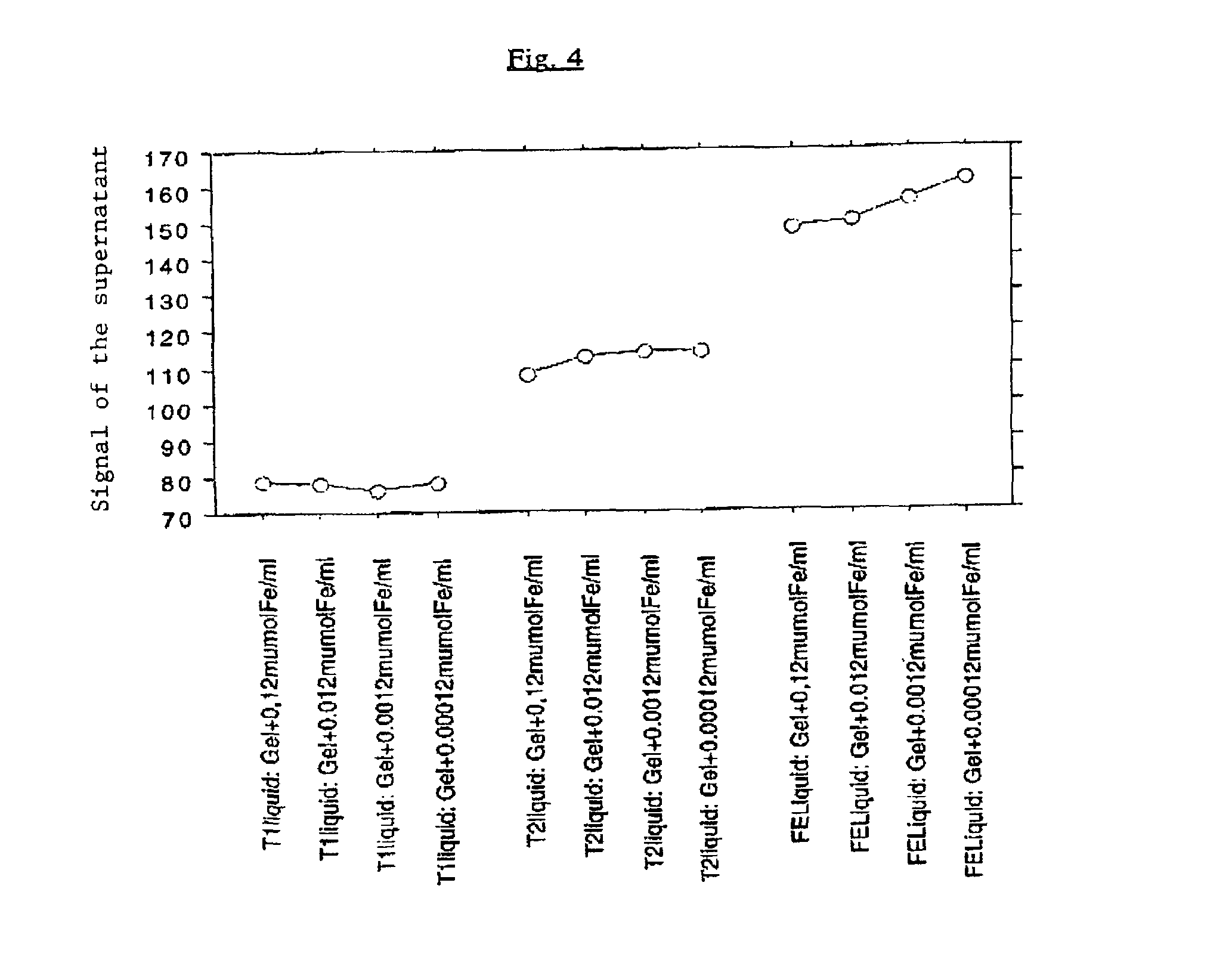Hydrophilic polymer biomaterial having a specific magnetic resonance imaging signal and process for the preparation of said biomaterial
- Summary
- Abstract
- Description
- Claims
- Application Information
AI Technical Summary
Problems solved by technology
Method used
Image
Examples
example 1
Block Gel
[0118]The following were mixed in a glass tube: 2.5 g of N-acryloyl-tris(hydroxymethyl)methylamine monomer (Polysciences Europe, Eppelheim, Germany), 0.2 g of methylene-bisacrylamide (Polysciences Europe, Eppelheim, Germany), 0.05 g of ammonium persulfate+6 ml of deionized water.
[0119]Separately, solutions were prepared diluted in water (to 1 / 10th, 1 / 100th, 1 / 1000th, 1 / 10,000th, (vol / vol) of dextran-magnetite (commercial Endorem solution, Laboratoires Guerbet, Aulnay, France).
[0120]5 microliters of dextran-magnetite solution was added to the mixture of monomers. Then, under agitation, 20 microliters of tetramethylethylenediamine 99% (Acros, Gel, Belgium) was added.
[0121]After polymerization, coherent homogeneous gels, translucent, slightly yellowish for those with the highest concentrations of dextran-magnetite were obtained. The most highly charged gel contained 1 micromole of iron per 8 ml of gel, i.e., 0.125 μmole Fe / ml gel.
[0122]The tubes of charged gel and multiple con...
example 2
Fragmented Gel in Suspension
[0127]A hydrogel was prepared as in the example with a charge concentration identical to that of the most highly charged gel cited in Example 1. The gel was fragmented into particles which were suspended in physiological serum. Several days later, the signal of the particles in suspension and that of the supernatant were studied using the MRI technique of Example 1.
[0128]Results: the fragments of charged gel presented the same characteristics as the gels of Example 1, as illustrated in FIG. 3. The supernatant liquid had the same characteristics as the physiological serum alone.
[0129]There was no variation of the signal of the supernatant liquid proportional to the quantity of marker present in the gel fragments, indicating the lack of liberation of marker, as illustrated in FIG. 4.
example 3
[0130]A hydrogel was prepared as in example 2. It was fragmented in the mixer and dried by lyophilization. This produced a powder constituted of charged particles. It was also possible to dry the hydrogel block and then fragment it to obtain a similar result.
PUM
| Property | Measurement | Unit |
|---|---|---|
| Fraction | aaaaa | aaaaa |
| Fraction | aaaaa | aaaaa |
| Fraction | aaaaa | aaaaa |
Abstract
Description
Claims
Application Information
 Login to View More
Login to View More - R&D
- Intellectual Property
- Life Sciences
- Materials
- Tech Scout
- Unparalleled Data Quality
- Higher Quality Content
- 60% Fewer Hallucinations
Browse by: Latest US Patents, China's latest patents, Technical Efficacy Thesaurus, Application Domain, Technology Topic, Popular Technical Reports.
© 2025 PatSnap. All rights reserved.Legal|Privacy policy|Modern Slavery Act Transparency Statement|Sitemap|About US| Contact US: help@patsnap.com



